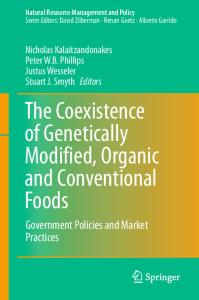Determination of Total Nitrosamines in Vegetables Cultivated Organic and Conventional Using Diamond Electrode
- PDF / 182,935 Bytes
- 6 Pages / 595.276 x 790.866 pts Page_size
- 28 Downloads / 273 Views
Determination of Total Nitrosamines in Vegetables Cultivated Organic and Conventional Using Diamond Electrode Lidiane Coffacci & Lucia Codognoto & Luciana F. Fleuri & Giuseppina P. P. Lima & Valber A. Pedrosa
Received: 30 July 2012 / Accepted: 1 October 2012 / Published online: 12 October 2012 # Springer Science+Business Media New York 2012
Abstract Vegetables were analyzed for total N-nitrosamines (NAs) and the influence of disinfection processes was assessed. Differences in NAs found in cabbage, spinach, and broccoli were determined by square wave voltammetry using a boron-doped diamond electrode. Analysis of samples showed that all samples contained detectable levels of NAs but the results indicated that organic contained less than conventionally grown products. The sum of the total NAs was higher in the cabbage samples, ranging between 2.8–3.1 ppb and lower in broccoli samples at 0.2– 1.1 ppb. The method described is simple, rapid, selective, and sensitive. The results suggested that the disinfection process affects the level of NAs, in this manner affecting the level of human exposure to NAs. Keywords Nitroso compounds . Electrochemistry . Organic food
Introduction The growth of organic market is changing the format and the face of modern agriculture. Currently, families around the world are worrying about environmental issues and food quality. Thus, organic agriculture has become a great alternative of lifestyle and the demand for organic products has increased constantly and gradually. Modern agriculture has been increasingly focused to maximize the available resources L. Coffacci : L. F. Fleuri : G. P. P. Lima : V. A. Pedrosa (*) Department of Chemistry and Biochemistry, Institute of Bioscience, UNESP-Botucatu, Botucatu, Sao Paulo, Brazil e-mail: [email protected] L. Codognoto Instituto de Ciências Ambientais, Químicas e Farmacêuticas, Universidade Federal de São Paulo, Diadema, Sao Paulo, Brazil
in order to, not only, increase productivity, but also to reach higher food quality and environmental protection (Morgan and Murdoch 2000). Nowadays, consumers have given preference to products of smaller size and, when possible, associated with a higher nutritional value. As a result, consumers have been choosing vegetables and fruits, such as potatoes, tomatoes, and strawberries, originating from organic farming. As organic agriculture does not use toxic pesticides or food preservatives (including nitrite), the choice of organic products is an easy way to help self-protection (Lairo 2010; Lima and Vianello 2011). U.S. Department of Agriculture regulations and label requirements do not allow the use of nitrite and nitrate salts in processed organic foods. This is considered advantageous, due to the decreased possibility of N-nitroso compound formation, associated to increased cancer risk. N-nitrosamines are N-nitroso compounds formed in certain foods by the reaction of a nitrosating agent derived from either nitrite salts or nitrogen oxide with a substance having an amino group. They can be also formed endog
Data Loading...











